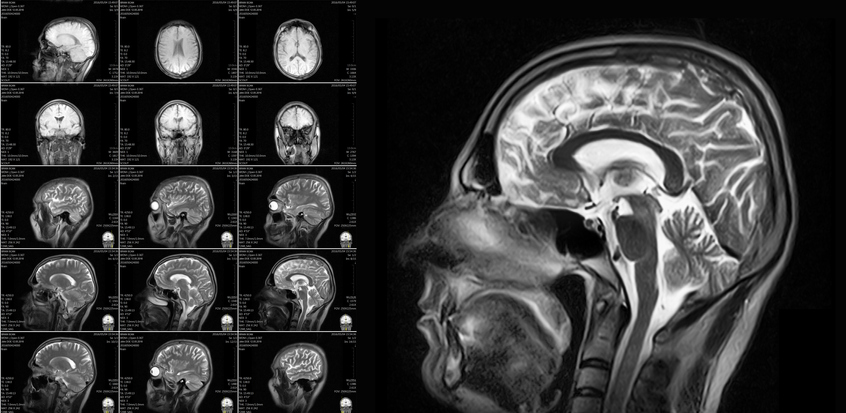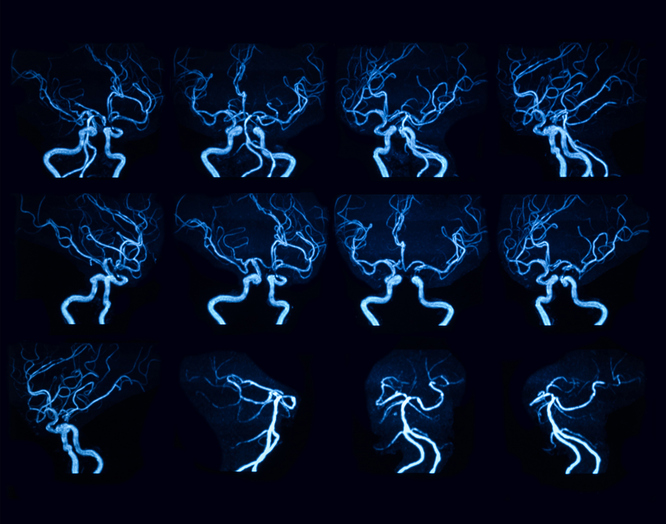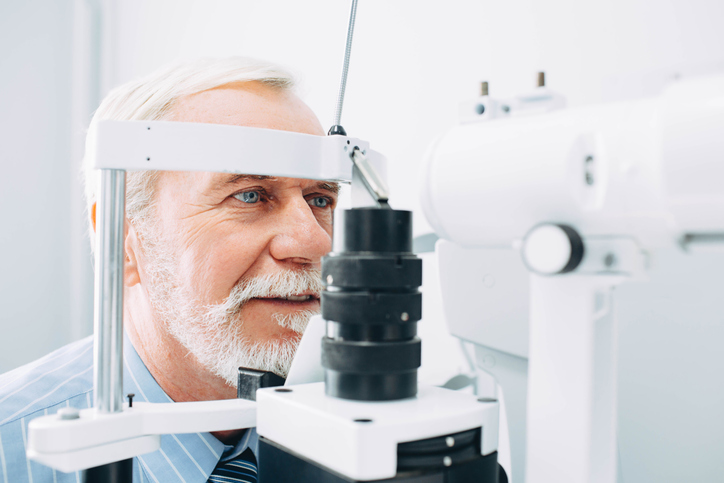
Have you experienced a sudden “eyelid twitch”? You probably do not know what causes an eyelid twitch or spasm; you may think it is just an eyestrain or you may be worried that it can be a warning sign of a serious disease if you experience it frequently.
In fact, there are various causes that trigger the twitch. Most of them are harmless temporary symptoms, however some of them require further medical attention.
If you visit an ophthalmologist when you experience an eyelid twitch, they may not find causes other than eye related problems. Which specialist should you visit, then?
In this article, Dr. Yoshiya Hasegawa, a specialist for neurological disorders, provides useful information about eyelid twitch/spasm: its causes, possible diseases, critical points to observe whether there is a serious underlying illness, as well as remedies and preventive methods you can try at home.
Contents
1. Eyelid twitch: How do you know the seriousness of the symptom
Causes of most eyelid twitches are identifiable by locating where the twitches occur. You may need to seek another medical opinion when you are not asked the following critical questions.
1-1. Does your twitch occur in both eyes?
You need to know where you have a twitch; is it only in one eyelid or both. More importantly, you need to observe how severe the episode is. If you experience a spasm in both eyelids, it is very rarely a sign of serious illness. However, if you experience a spasm strong enough to force both eyelids to close completely, especially if it occurs while you are driving, you should consult a specialist.
1-2. Does your twitch occur only in one eyelid?
When your twitch occurs in only one eyelid, you need to see if it accompanies twitches in your forehead or around your mouth. Twitches occurring only in the upper or lower eyelid rarely indicate serious illness and immediate medical attention is not necessary.
1-3. Does your eyelid twitch affect your mouth or forehead?
If your eyelid twitch accompanies spasms in your forehead or around your mouth, further medical check-up is required. In that case, you should closely observe your condition with the aid of a mirror, your family or friends.
2. Twitch in one eyelid: when a further check-up is necessary
Further medical examination is necessary when hemifacial spasm is suspected: this is when a spasm occurs in the muscle used to close an eye; muscle contracted to smile; muscle responsible for opening and closing the jaw. In some cases, hemifacial spasm might be caused by a life-threatening disease such as brain tumor. A Medical visit is a must if you find the facial spasm listed above.
2-1. What is hemifacial spasm?
Majority of patients with hemifacial spasm are over 40 where male/female ratio is 1:2. The first spasm usually appears only around the eyes and it gradually spreads and results in involuntary muscle twitch in one side of the face. This twitch occurs when the muscles in the eyelid or mouth is affected such as when someone is taking, laughing, or eating. Others experience it when they are nervous. Some of the hemifacial spasm may accompany tinnitus (a ringing in the ear.)
2-2. Causes of hemifacial spasm
Hemifacial spasm is most often caused when a blood vessel (an artery) touches a facial nerve coming from the brainstem which causes involuntary excitation. A facial nerve is a motor nerve which controls muscle movement in the face and have no pain receptors. Imaging scan is ordered to see if there is a tumor or an aneurysm disturbing a nerve.
2-3. Treatments of hemifacial spasm
Anticonvulsants are used to treat hemifacial spasm which include carbamazepine (Tegretol) in order to relieve a spasm. However, it reportedly is difficult to get rid of the symptom completely.
The most effective option is surgery to remove the vascular compression, as this will treat the cause itself. However, it is not recommended for patients over 60 because of age-related risk factors. Injection of Botulinum toxin Type A into the twitching muscle is a commonly used treatment to suppress spasms in recent years. The injection has to be repeated because the efficacy lasts only for 3 to 4 months.
3. Which medical specialist should you visit?
When you have one of the eyelid spasms as described earlier, which specialist should you visit?
3-1. Neurologist or neurosurgeon
You need to be examined either by a neurologist or neurosurgeon. Most importantly, the examination must include a “medical interview.” Determining whether you need a thorough checkup depends on the location of the spasm mentioned earlier; whether you have it in one eyelid or both, whether it also affects your forehead or the area around your mouth. Therefore, this medical interview plays an important role for a doctor to decide on what medical examinations to do. It is recommended to seek another doctor if the medical interview seems insufficient. However, you do not need to visit a doctor if you can observe your condition and think there are no underlying serious problems.
3-2. CT is not enough; ask for MRI and MRA
If your spasm occurs not only in the eyelids but in the foreheads or around the mouth, imaging scan is always required. In this case, a head CT is insufficient. Diagnosis should be made in accordance with MRI findings such as presence of a blood vessel running parallel to or looping around the facial nerves; vascular compression to the brainstem where facial nerves originate; or a formation of a tumor.

MRI produces three dimensional detailed anatomical images.

Cerebral angiography by MRA
4. Common disorders which cause eyelid twitch
Here is a list of disorders where eyelid twitch commonly occurs.
4-1. Blepharospasm
Spasms usually occur in the both eyelids. The first onset includes discomfort in the eyelids, light sensitivity, excessive blinking and so on. Gradually, the onsets of twitches become more frequent, affecting the patient’s daily activities. When it further worsens, the patient is unable to voluntarily open their eyes.
While it never becomes a life-threatening illness, no treatment exists to cure it completely. Botulinum toxin A injections around the eyelids are the most popular form of treatment to relieve excessive tightness when closing the eyes.
4-2. Eyelid myotonia
Eyelid myotonia is a disorder where a twitch occurs in the eyelid when tired. It only causes a slight twitch in upper or lower eyelid and never affects another area in the face. It is relatively a minor illness and will clear up on its own by removing its trigger.
Physical fatigue, mental stress, or consuming too much caffeine may trigger the onset. It is most likely to disappear in a few days or weeks.
4-3. Tic disorder
Tics are sudden, involuntary behaviors which commonly occur in childhood and adolescence. When tics appear in the face, they may cause frequent eye blinking. It is considered to be usually triggered by a patient’s emotional states. Tics are different from other mental disorders because they are temporarily suppressible. I used to experience a tic symptom when I attempted a college entrance exam, however, it disappeared right after I passed the test.
4-4. Wearing eyeglasses with the wrong prescription
If you experience eyelid twitches when you are reading or working on a computer, you may need to check your eyeglasses. They may be triggered when your eyes try to focus because your eyeglasses are either too strong or weak for you. If you feel bothered by the frequent eyelid twitch, you may need to see your optician for a vision test and make sure your eyeglasses are of correct strength.

5. Daily habits to prevent eyelid twitches
Hemifacial spasm which causes a spasm in the muscle in one side of the face, in addition to one in the upper eyelids, or facial spasm which occurs in both eyelids need respective treatments. However, most eyelid spasms can be relieved by improving your lifestyle.
5-1. Avoiding eye strain or dry eye
Eyelid twitches are most likely triggered by eye strain and dry eye. It may be improved by reducing eye fatigue. Also, I personally recommend warm compressors for your eyes before bedtime. It helps not only to relieve eye strain or dry eye but also improve the autonomic nervous system.
5-2. Consuming less caffeine
If you drink coffee every day, it may be a cause of eyelid twitch. In fact, the muscle around the eyes is sensitive to caffeine compared to other areas. Caffeine which can increase heart rate and metabolism tends to affect muscle around the eyes and leads to eyelid twitch.
5-3. Minimizing stress
Your body reacts to stress in various ways and an eyelid spasm may be one of them. Does anything come to mind? Because the spasm can be a sign of an underlying problem.
6. Summary
- If you experience a twitch only in one eyelid, it is very rarely a sign of serious illness.
- If your eyelid twitch accompanies spasms in your forehead or around your mouth, or if the spasm spreads to muscle in the both eyelids, a further medical check-up is required.
- You may want to consult a neurologist or neurosurgeon is about your eyelid twitch.

